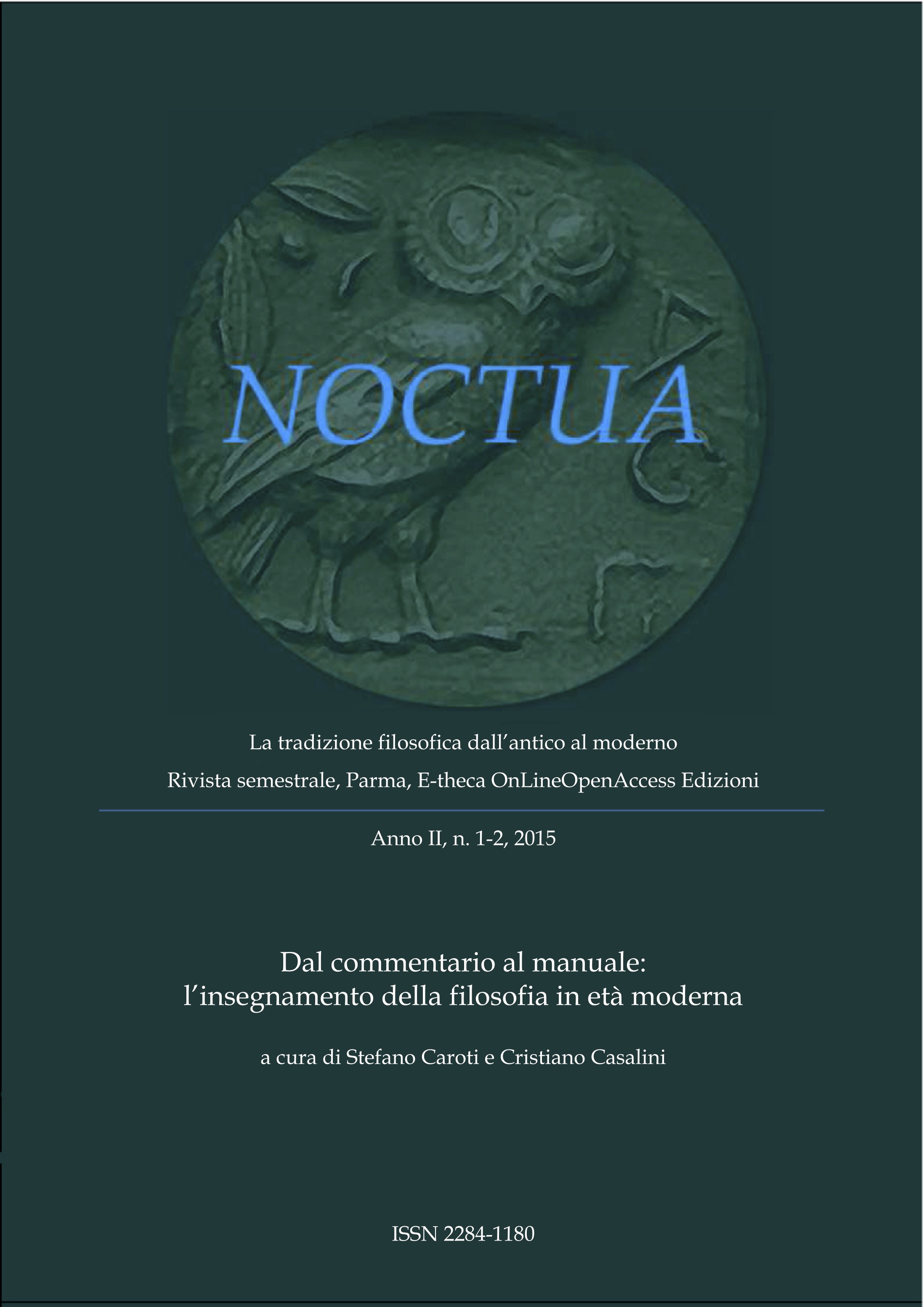The Didactic, Persuasive and Scientific Uses of Illustrations After Descartes
DOI:
https://doi.org/10.14640/NoctuaII11Parole chiave:
Cartesianism, Dutch Universities, illustrations, natural philosophy, NewtonianismAbstract
The aim of this article is to unveil the ways of teaching new philosophical paradigms in Dutch Universities between Seventeenth and Eighteenth Century, by means of an analysis of the uses of illustrations in Cartesian and Newtonian natural-philosophical textbooks. This analysis allows to understand the overall functions of philosophical textbooks, where illustrations act as (a) conceptual means, filling the gap between the premise of a theory and its actual contents; (b) didactic means, aiming to help the reader in understanding scientific models fully explained in texts; (c) promoting or propagandistic instruments, useful to present theories in a fascinating way. Eventually, I argue for a positive correlation of the use of illustrations and the introduction of new philosophies, and for the existence of non-philosophical reasons for such use: as to the propagandistic function of illustrations intended as decorative means.
##submission.downloads##
Pubblicato
Fascicolo
Sezione
Licenza
Copyright (c) 2015 Andrea Strazzoni

TQuesto lavoro è fornito con la licenza Creative Commons Attribuzione 4.0 Internazionale.
Noctua pubblica contributi Diamond Open Access secondo i termini della licenza CC BY / Noctua publishes Diamond Open Access contributions under the terms of the CC BY license.






